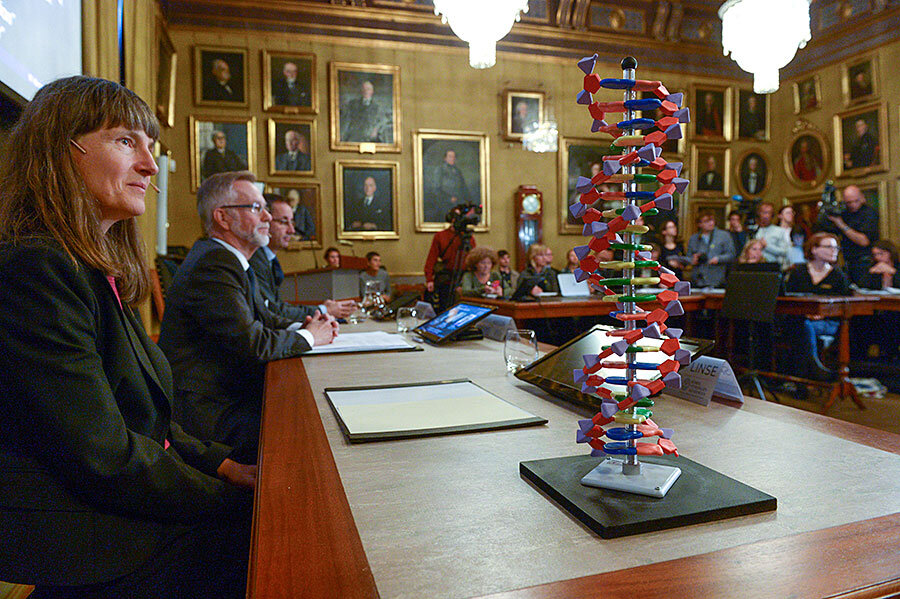Scientists win chemistry Nobel for DNA repair studies
| Stockholm
Three scientists from Sweden, the United States, and Turkey won the Nobel Prize in chemistry on Wednesday for showing how cells repair damaged DNA.
Swedish scientist Tomas Lindahl, American Paul Modrich, and U.S.-Turkish national Aziz Sancar shared the 8 million Swedish kronor (about $960,000) award.
The Royal Swedish Academy of Sciences said their work on DNA repair "has provided fundamental knowledge of how a living cell functions."
Lindahl is an emeritus group leader at Francis Crick Institute and Emeritus director of Cancer Research UK at Clare Hall Laboratory in Britain.
Modrich is an investigator at Howard Hughes Medical Institute and professor at Duke University School of Medicine in Durham, North Carolina.
Sancar is a professor at the University of North Carolina School of Medicine in Chapel Hill, North Carolina. Sancar is the second Turk to win a Nobel Prize after novelist Orhan Pamuk was awarded the literature prize in 2006.
"I'm sure there will be (celebrations in Turkey)," Sancar said. "Yes, they've been asking over the years and I was tired of hearing 'when are you going to get the Nobel Prize?' so I'm glad for my country as well."
Speaking by phone to a news conference in Stockholm, Lindahl said "it was a surprise" to win the award.
In the 1970s Lindahl showed that DNA, the molecule that contains our genes, actually decays at a rate that should be incompatible with human life. He realized that there must a repair mechanism, opening a new field of research, the academy said.
Working at Yale University, Sancar mapped the mechanism that cells use to repair DNA damaged by ultraviolet radiation. Modrich showed how the cell corrects errors when DNA is replicated during cell division, a process known as mismatch repair.
The findings, say scientists, are significant for cancer research. Researchers are now looking at ways to destroy cancer cells' DNA repair mechanisms, academy member Peter Brzezinski said.
The award will be handed out along with the other Nobel Prizes on Dec. 10, the anniversary of prize founder Alfred Nobel's death in 1896.
This year's medicine prize went to scientists from Japan, the United States, and China who discovered drugs to fight malaria and other tropical diseases. Japanese and Canadian scientists won the physics prize for discovering that tiny particles called neutrinos have mass.
The Nobel announcements continue with literature on Thursday, the Nobel Peace Prize on Friday and the economics award on Monday.
___
AP Science Writer Malcolm Ritter in New York contributed to this report.
Copyright 2015 The Associated Press. All rights reserved. This material may not be published, broadcast, rewritten or redistributed.







